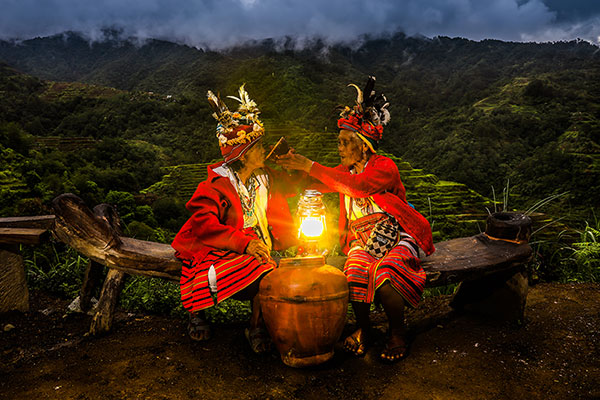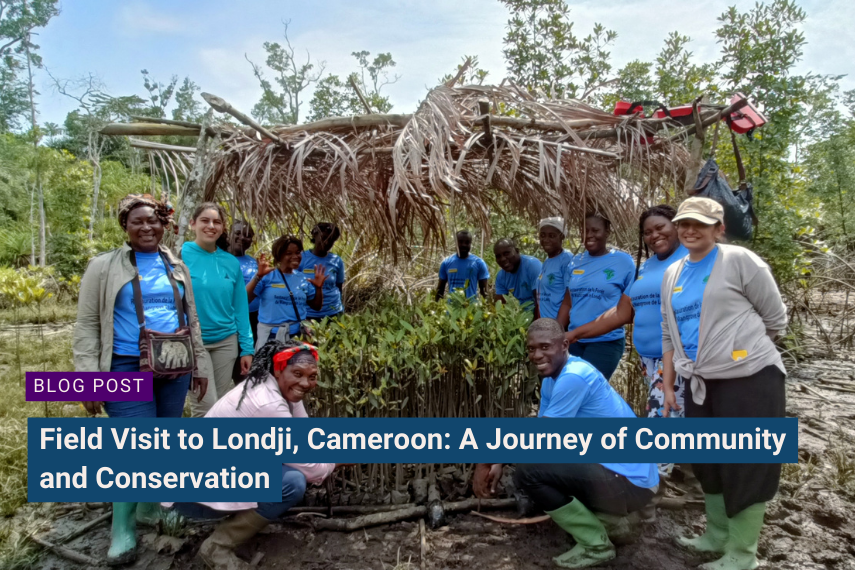Text and Photos by Deepika Nandan, Visual Communications Officer, Women4Biodiversity
In May this year, I had the incredible opportunity to visit Londji, a small coastal village in Cameroon. My journey took me to the heart of a community-driven initiative focused on restoration. Here, women and men work together with our partners, the African Women’s Network For Community Forest Management (REFACOF), towards the restoration of mangroves, a crucial ecosystem that supports both local biodiversity and the livelihoods of people.
Mangroves in Londji
The mangroves of Londji have been under threat due to various factors such as rampant development, construction of large hotels, and unsustainable use of mangroves by humans. The degradation of the mangroves has also reduced the number of fish in the area, affecting the community’s livelihoods. As Madame Masso Rose of REFACOF says, “Mangroves are an extremely important ecosystem as they serve many functions. Mangroves are pivotal in the fight against climate change. They are also a center for fish reproduction. Without the mangroves, we would not have fish.” Some members of the community have come together in a remarkable way to restore and protect these vital ecosystems.

Meet the Community Members
Upon arriving in Londji, we were greeted by the community with dance and song. The members of the Association des Femmes pour la Protection et la Conservation de la Mangrove, or the Association of Women towards Protection and Conservation of Mangrove, welcomed us to their home, sharing their stories and learnings from their restoration work.
To give you a better sense of the people behind this incredible initiative, I’d like to introduce you to a few of the community members.

Rodia says that as a child, she did not realize the importance of mangroves. Ten years ago, when government officials came to demonstrate their role in the ecosystem, she began to understand their value. Six people attended this government-led training workshop and organized meetings to engage the community once they returned to their villages. They even sensitized children in schools so that they could, in turn, educate their parents. Rodia and her group made it a point to educate everyone about the importance of mangroves.

Lucienne is the President of the Association des Femmes pour la Protection et la Conservation de la Mangrove (Women’s Association for the Protection and Conservation of Mangroves). A dedicated individual involved in this work, she has been participating in mangrove regeneration since 2006. Lucienne expresses her hopes and aspirations for the future, stating that women want to take charge of their lives and participate in meaningful work. She hopes their association will secure additional projects to continue improving their efforts.

Emille is a native of Londji. He is married and has two children who live in the city, approximately 7 km away. He also has three brothers. His mother, an ecologist, is elderly and still resides in the village. Emille began reforesting in 2011 with the Ministry of the Environment. Initially, they planted 40,000 to 50,000 mangroves. In the second phase, they planted an additional 10,000. With REFACOF, they planted another 8,500, totaling close to 100,000 seedlings overall.

Emillienne was introduced to REFACOF by her husband, Emille. She is grateful that REFACOF helped bring the women together and form the association to plant mangroves collectively. Emillienne is now involved in the planting of mangroves. She says that restoration requires an understanding of the landscape and ecosystem, adding, “Mangrove seedlings require mud and water from the sea and river, as mangroves thrive in a mix of salt and fresh water.”
Restoring Mangroves
Rodia shared that their efforts were first met with mockery, with people questioning what their actions would achieve. They had to explain that mangroves are crucial for absorbing gases and providing a habitat for fish reproduction. Over time, the community learned that the decline in fish populations required them to travel farther to fish, making the restoration of mangroves vital for avoiding erosion, absorbing gas, and facilitating fish reproduction.
One particular species, known locally as ‘Aloj’ (with the French name “le refaca”), was especially important. Ten years ago, this fish was scarce and expensive, requiring long journeys to find. However, since the community began reforesting the mangroves, the fish have returned and started to reproduce locally. Mangrove wood is also used to smoke fish, so women had to be sensitized to be mindful of how much mangrove wood was cut. The community also adopted improved stoves, which proved to be highly efficient, allowing fish to be smoked with fewer pieces of wood. If you would like to learn more about the fish-smoking process, please see this photo story. Along with planting seedlings and restoring the landscape, the community’s efforts also foster a culture of environmental stewardship and respect for mangroves that will last for generations.

An Inspiring Experience
Watching the community members work together was inspiring. The older members taught not just the ‘how’ but also the ‘why’ of restoration. My visit to Londji was a powerful reminder of what can be achieved when people come together for nature. The efforts to restore the mangroves are not just about planting trees; they are about building a sustainable future, preserving a way of life, and creating a legacy for the next generation. The people of Londji have shown that with determination and respect for nature, we can work toward a more sustainable, biodiverse, and gender-inclusive future.

About the author

Deepika is the Visual Communications Officer at Women4Biodiversity. She is an artist from Bengaluru, India whose practice explores using found objects and natural, sustainable materials. When she’s not outside collecting leaves, seeds, and other curiosities, she’s drawing them. Her fascination with the natural world began with observing ants as a child. Now, she uses her art to communicate about the fascinating life around her. She investigates the biosphere and how humans interact with it using location and context-specific media and visuals. She hopes her curiosity is contagious and her work inspires sustainability and conservation.


